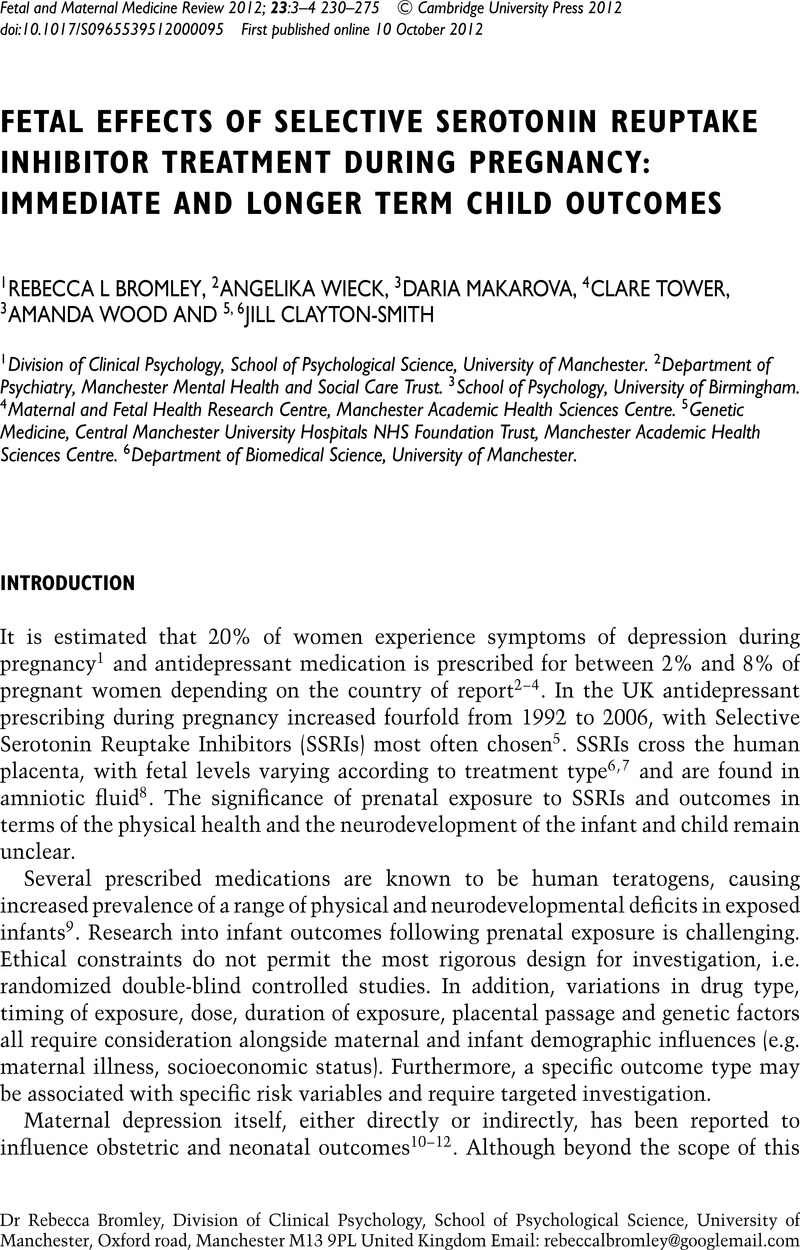Crossref Citations
This article has been cited by the following publications. This list is generated based on data provided by Crossref.
Paschetta, Elena
Berrisford, Giles
Coccia, Floriana
Whitmore, Jennifer
Wood, Amanda G.
Pretlove, Sam
and
Ismail, Khaled M.K.
2014.
Perinatal psychiatric disorders: an overview.
American Journal of Obstetrics and Gynecology,
Vol. 210,
Issue. 6,
p.
501.
Bowman, Jennifer A.
Hellier, Susan D.
and
Cline, Thomas W.
2015.
Sources Impacting Pharmacological Treatment for Anxiety and/or Depression During Pregnancy.
The Journal for Nurse Practitioners,
Vol. 11,
Issue. 2,
p.
184.
Prady, Stephanie L.
Hanlon, Inna
Fraser, Lorna K.
and
Mikocka-Walus, Antonina
2017.
A systematic review of maternal antidepressant use in pregnancy and short- and long-term offspring’s outcomes.
Archives of Women's Mental Health,
Fitton, C. A.
Steiner, M. F. C.
Aucott, L.
Pell, J. P.
Mackay, D. F.
Fleming, M.
and
McLay, J. S.
2020.
In utero exposure to antidepressant medication and neonatal and child outcomes: a systematic review.
Acta Psychiatrica Scandinavica,
Vol. 141,
Issue. 1,
p.
21.



